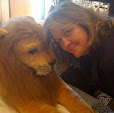
I prefer to listen to Bill Bryson read his work, and so have been putting off reading his latest, At Home: A Short History of Private Life, which I received in hardbound form for my birthday last November until I could listen to it. I wasn't disappointed. At Home was an absolutely marvelous book--chock full of fascinating information delivered with wry humor.
At Home is an excellent book for people like me who love history and historical fiction, particularly the Regency and Victorian time periods. Bryson uses his house in England, which was built in 1850 as a rectory, as the framework for discussing virtually all aspects of human life by visiting each room and discussing in a rambling, folksy, anecodote-laden way the facets of society and technology associated with that room over the millennia, but with a focus on the last 200 years.
In the Kitchen chapter, for example, Bryson discusses not only what people ate and why, but how the food was procured, prepared, and consumed. This means we are treated to information on farming, refrigeration and the use of ice, cooks and scullery maids, the East India Company, the quest for spices and the associated voyages of discovery, medicine, vitamins, and a host of other interrelated topics.
And so it goes, from the cellar to the attic, by way of the hall, drawing room, bathroom, stairs, nursery, bedroom, etc. with the axle of the book being the year 1851, the year of, among other things, the Great Exhibition at the Crystal Palace. In fact, a discussion of the building of the Crystal Palace is really the first in-depth story Bryson tells and I enjoyed this part so much that I listened to it a second time. I loved hearing about Joseph Paxton, the energetic gardener, who designed the Crystal Palace as basically a gigantic greenhouse, and how this was made physically possible by recent technological advances in the manufacture of both glass and cast iron, and financially possible by the dropping of a tax on glass.

The whole book is like this...from how salt and pepper became our seasonings of choice, to how the Eiffel tower was built, to how lighting in the home before electricity was achieved and at what cost, to clothing, wigs, cosmetics, lice, vermin, plumbing, and on and on.
Another favorite section, again near the beginning, was a dicussion of the role of the clergy in the development of science, technology, and the arts, but not necessarily in religion. The crux of the idea is that most clery in the 18th century through the mid/late 19th century had a comfortable income with not a lot of responsibility and so those who were motivated were able to pursue their pet interests with a great deal of energy. Many key contributors to archeology, geology, linguistics, and a variety of other endeavors were devoted and passionate amatuers who were also clergymen.
Speaking of archeology, I found absolutely riveting the section in which Bryson recounts the discovery of the neolithic village of Skara Brae, in Orkney, Scotland, in 1850 (yes the same year Bryson's house was built!). I never knew about this well-preserved village and now I'm trying to figure out how I can visit it.

Much as I love to read history books and historical fiction, it's been awhile since I was under any illusion that I was reading about the "good old days." Even so, At Home reminded me strongly that I am thankful to be living out my life in the 21st century. His discussion of the lives of servants, children, and the poor in particular provide a strong lesson in how far we as a society have come, even in the last half century. Hearing about living conditions, whether urban or rural, workhouses, and factories is sobering. So much of life in the past was neither pleasant nor easy...but it is endlessly fascinating to learn about.
Here's an illustration that I found in a San Franciscio Chronicle review of the book that will give you a further taste for the rich depth of interesting facts that Bryson delivers in this marvelous book.


I've been to Skara Brae. It is amazing.
ReplyDeleteI enjoyed reading this book, too, though it was a year ago, so I've forgotten some of the details.
ReplyDeleteI loved this book. I have never heard him read his books but I can imagine that his voice makes them even more entertaining.
ReplyDeleteOne of my fave Bill Bryson books is The Mother Tongue, but this one and Notes From a Small Island are great too!
Great review! I've been interested in this, and now think I'll choose the audio format . Bryson does a wonderful job reading his own work.
ReplyDeleteWell done, Jane! As usual, I'd add. I only read Notes from a Small Island by B. Bryson and it was a very good one. I love his humorous style.
ReplyDeleteI loved this book, one of my favorite reads of the year, definitely my favorite non-fiction book so far! (I did have to skip the bits about lice and bedbugs though, ew.) Social history fascinates me, much more than political history. I love Bryson but I've never listened to any of his books on audio -- I'm sure he's delightful.
ReplyDeleteI've always intended going to Skara Brae but just never got around to it. It's in danger of being lost forever in heavy weather too so I really should just go!
ReplyDelete